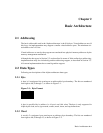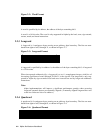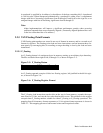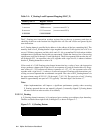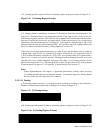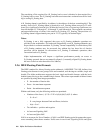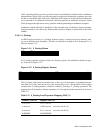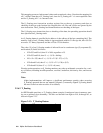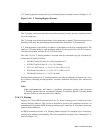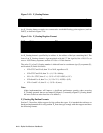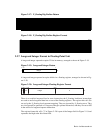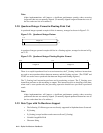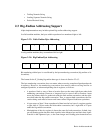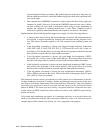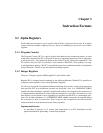
2–8 Alpha Architecture Handbook
This mapping preserves both normal values and exceptional values. Note that the mapping for
all 1’s differs from that of F_floating load, since for S_floating all 1’s is an exceptional value
and for F_floating all 1’s is a normal value.
The S_floating store instruction reorders register bits on the way to memory and does no
checking of the low-order fraction bits. Register bits <61:59> and <28:0> are ignored by the
store instruction. The S_floating load instruction does no checking of the input.
The S_floating store instruction does no checking of the data; the preceding operation should
have specified an S_floating result.
An S_floating datum is specified by its address A, the address of the byte containing bit 0. The
memory form of an S_floating datum is sign magnitude with bit 31 the sign bit, bits <30:23>
an excess-127 binary exponent, and bits <22:0> a 23-bit fraction.
The value (V) of an S_floating number is inferred from its constituent sign (S), exponent (E),
and fraction (F) fields as follows:
• If E=255 and F<>0, then V is NaN, regardless of S.
• If E=255 and F=0, then V = (–1)**S x Infinity.
• If 0 < E < 255, then V = (–1)**S x 2**(E–127) x (1.F).
• If E=0 and F<>0, then V = (–1)**S x 2**(–126) x (0.F).
• If E=0 and F=0, then V = (–1)**S x 0 (zero).
Floating-point operations on S_floating numbers may take an arithmetic exception for a vari-
ety of reasons, including invalid operations, overflow, underflow, division by zero, and inexact
results.
Note:
Alpha implementations will impose a significant performance penalty when accessing
S_floating operands that are not naturally aligned. (A naturally aligned S_floating datum
has zero as the low-order two bits of its address.)
2.2.6.2 T_floating
An IEEE double-precision, or T_floating, datum occupies 8 contiguous bytes in memory start-
ing on an arbitrary byte boundary. The bits are labeled from right to left, 0 through 63, as
shown in Figure 2–13.
Figure 2–13: T_floating Datum
S
:A
:A+4
Fraction Lo
Fraction Hi
Exponent
0
31 30 19
20




